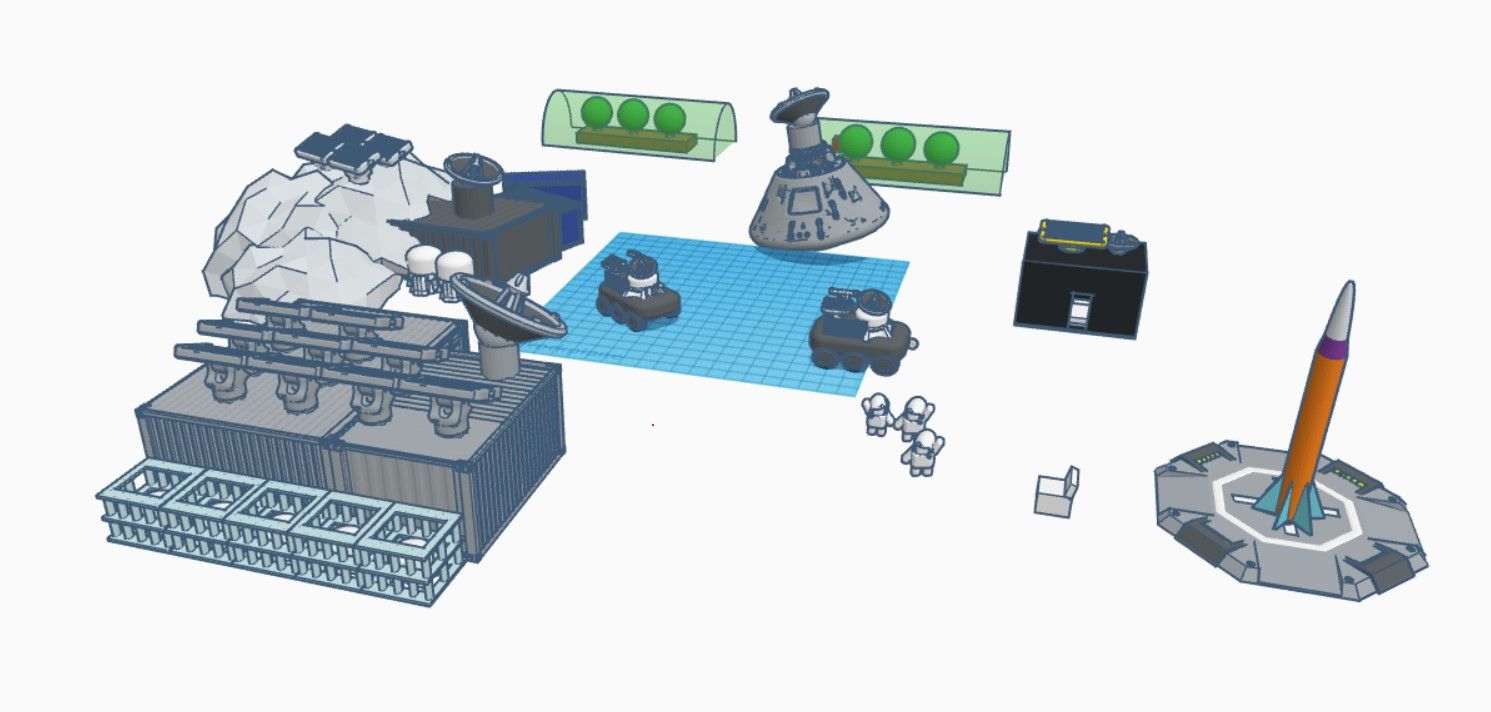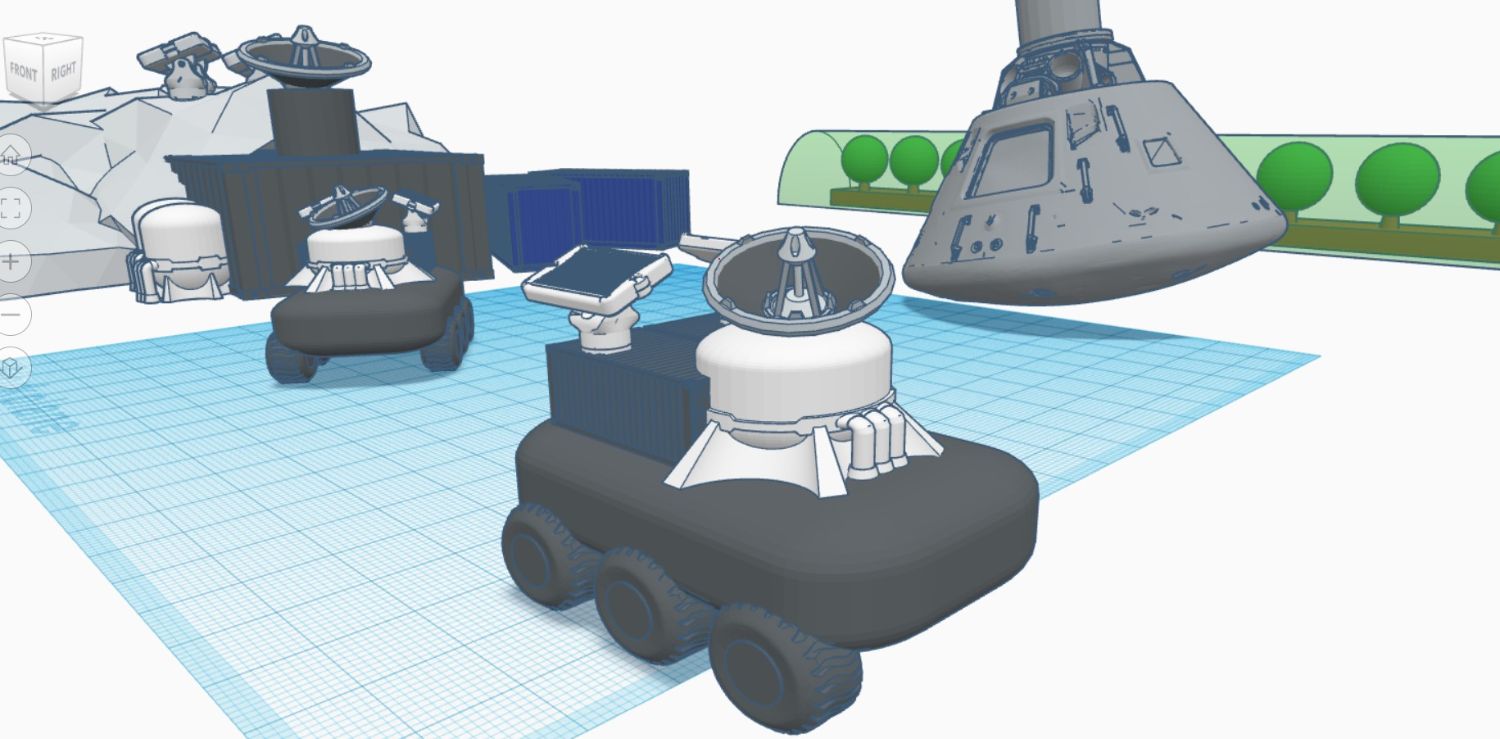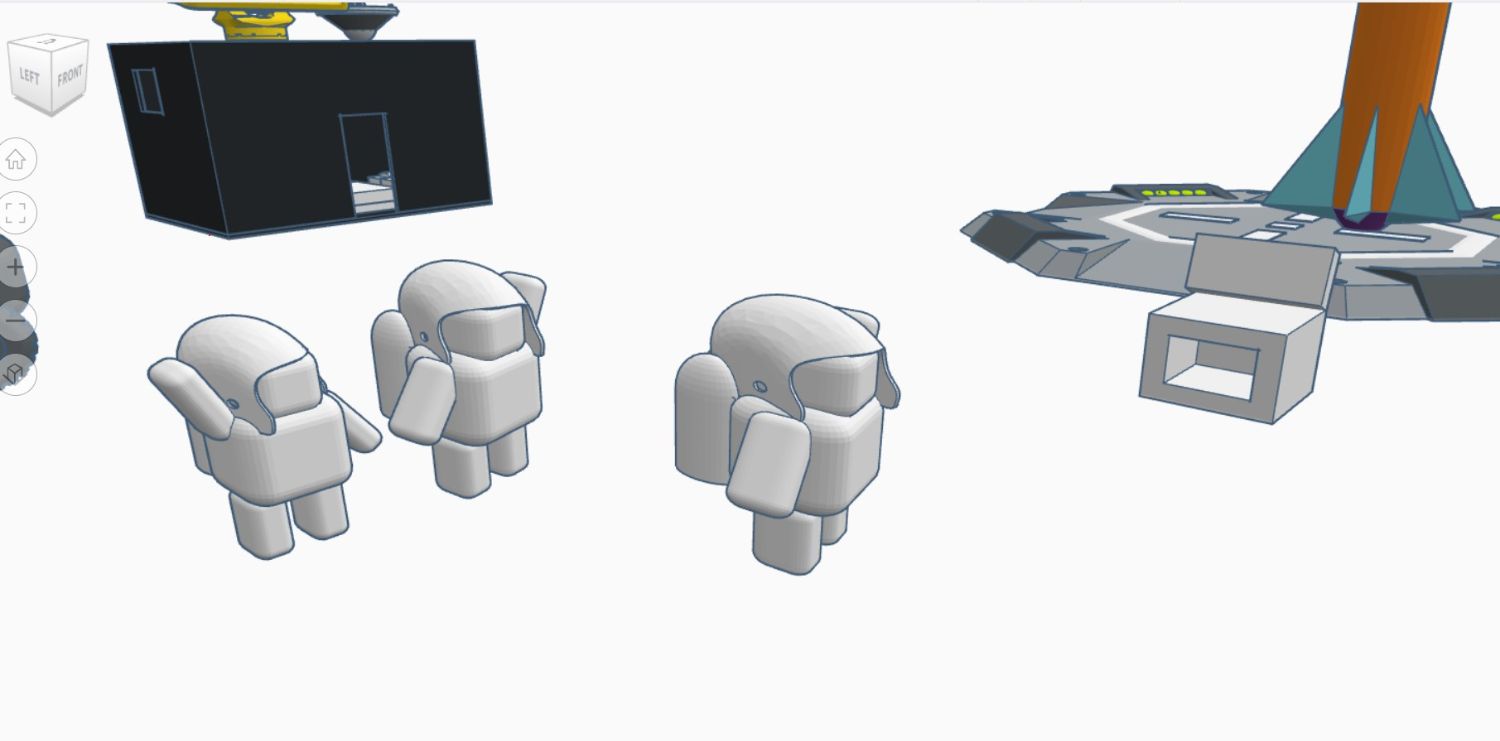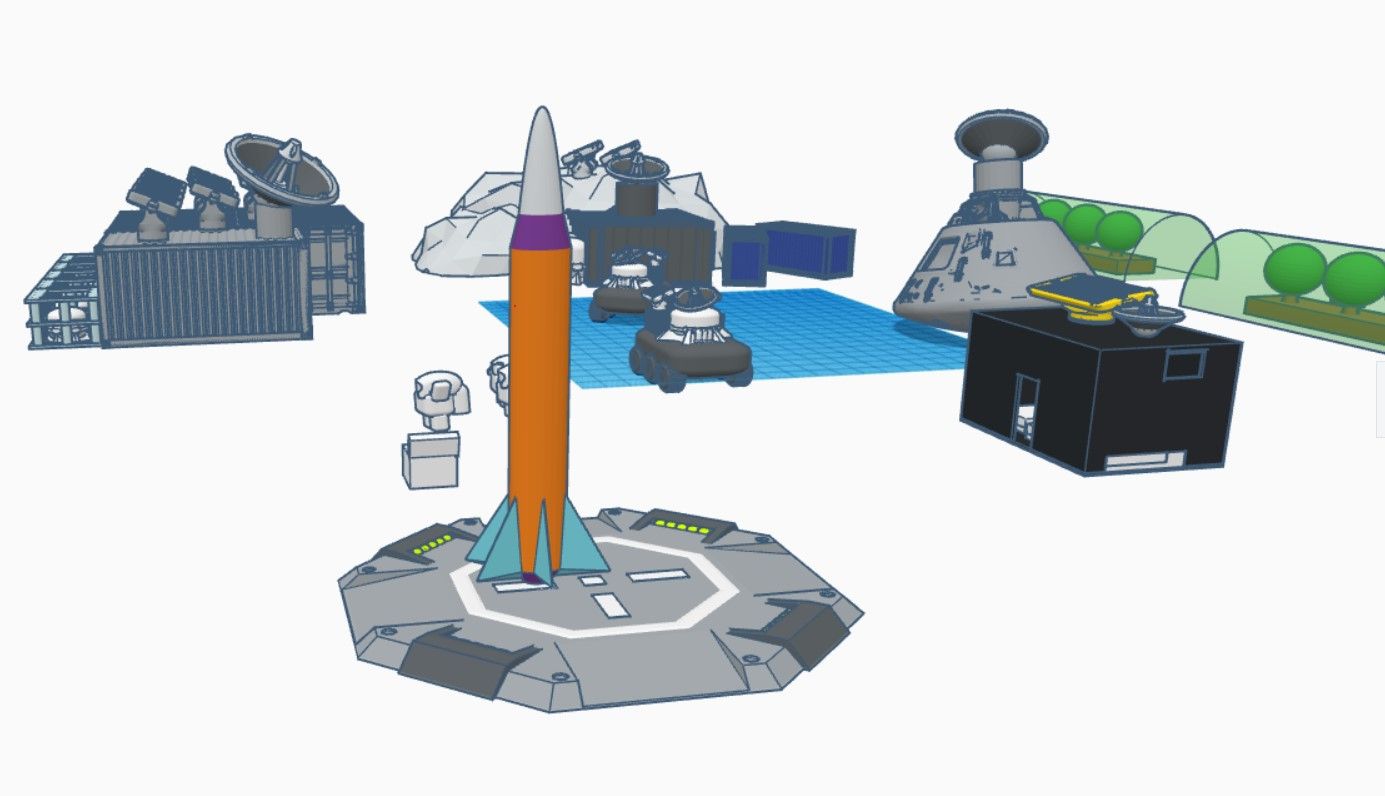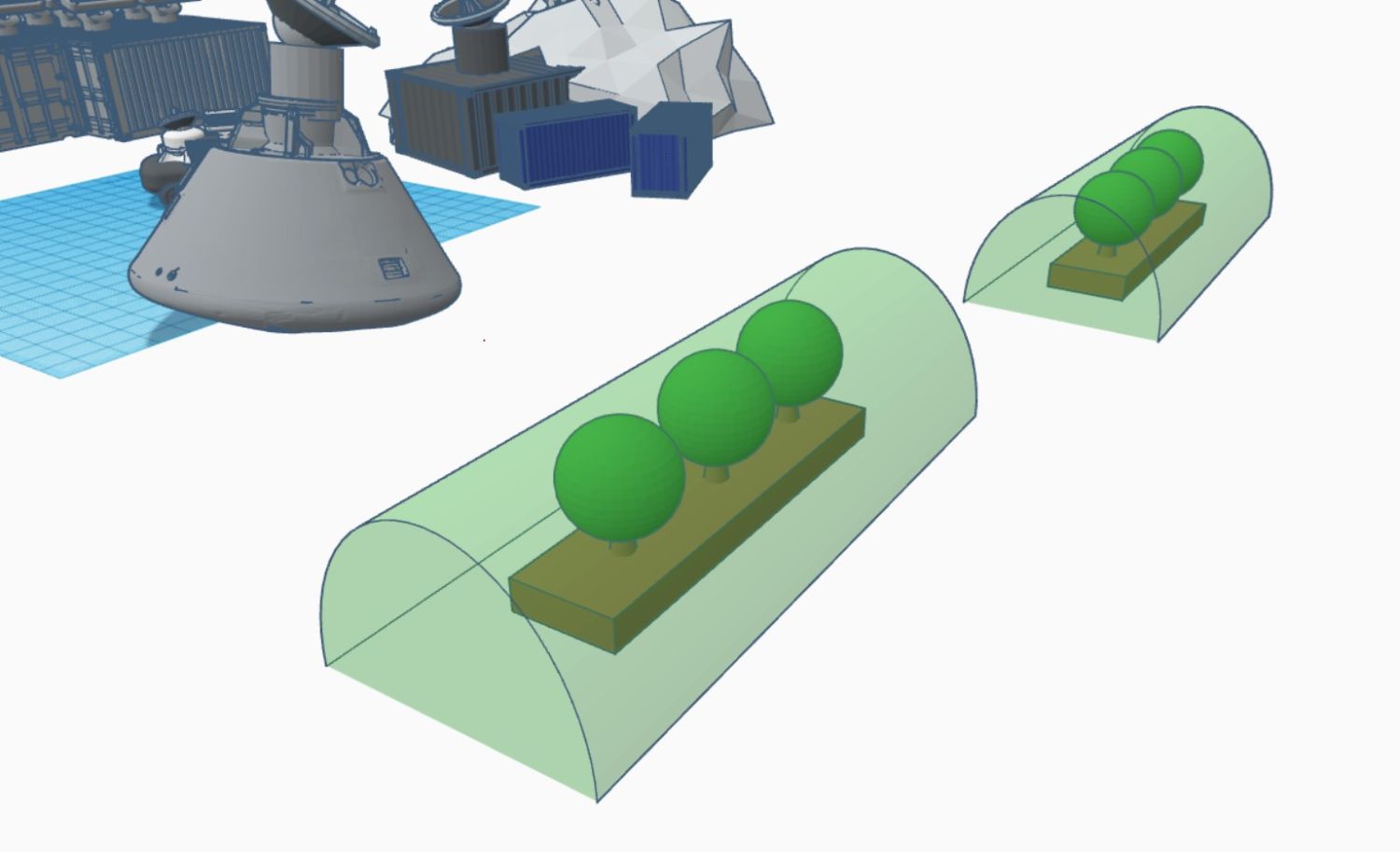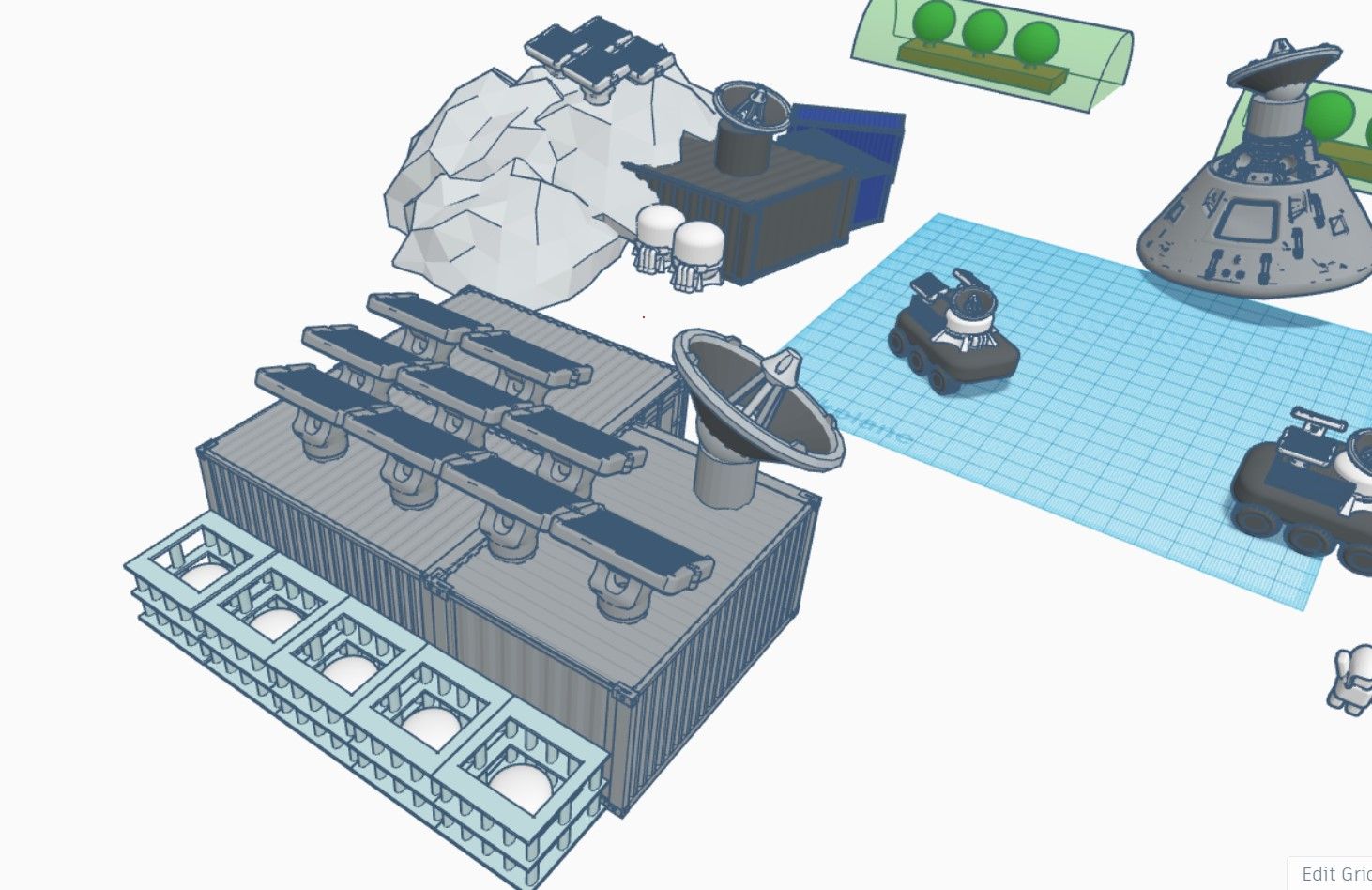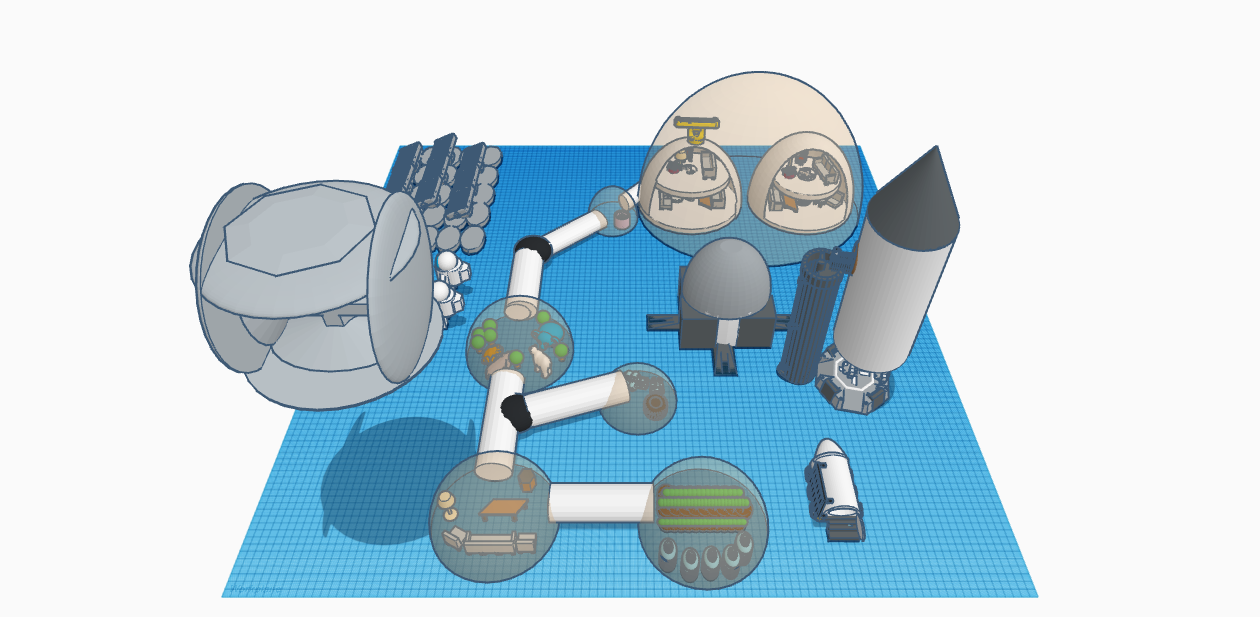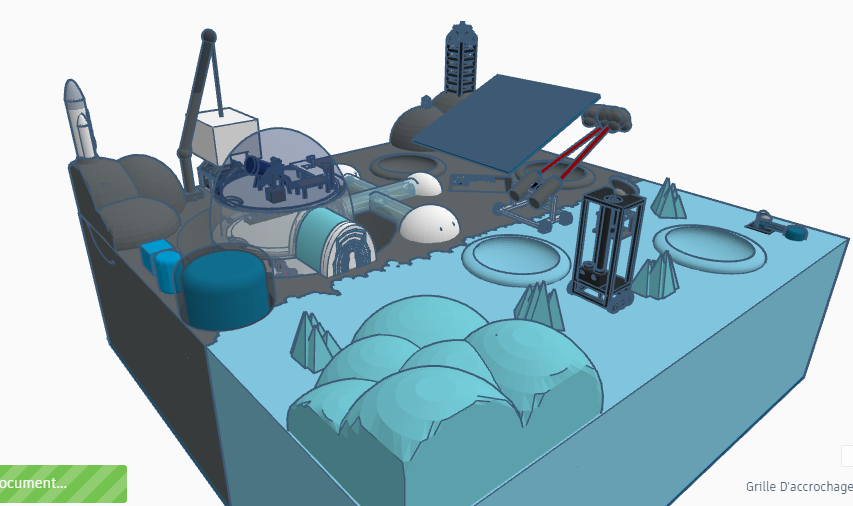Moon Camp Explorers Gallery 2021-2022
In Moon Camp Explorers each team’s mission is to 3D design a complete Moon Camp using Tinkercad. They also have to explain how they will use local resources, protect astronauts from the dangerous of space and describe the living and working facilities.
Team: Apollos
Northville Elementary School Northville United States 11 6 / 2
External link for 3d
|
Project description
Our moon camp will be in the lunar lava tubes at the North Pole. We chose this because the lunar lava tubes are comfortable in temperature and protective. They are also big enough to hold a ten story house so there’s plenty of room to build. The materials we would use to build our moon camp are tungstenite because it’s one of the strongest man made materials. We would also use Polyethylene because it is super compressed into plastic and strong enough to stop a bullet. Polyethylene also gives protection from meteorites and radiation, and is 20 centimeters thick! Polyethylene can be made into any shape or form. For our astronauts we will get the water by the frozen ice in the deep craters. We will get food from plants that we grow. The power we will use will come from many solar panels powered by fuel cells. We will get air from the oxygen tanks the astronauts will be carrying and our greenhouse. We will be protected because of the lava tubes. As you can see, our moon camp is ready to be on the moon.
|
||||
|
Where do you want to build your Moon Camp?
Lunar lava tubes Why did you choose this location?
We chose the lunar lava tube on the North pole for many reasons. They provide protection from large and small meteorites. Some are the size of a house! Since the lunar lava tubes are underground they protect us from meteorites. The lunar lava tubes are 300 meters wide and 40 meters deep, big enough to fit a 10-story building! Being underground provides protection from the sun’s radiation. It only takes one year to be exposed to a lifetime of radiation! The temperature in these tubes is -58 to 0 degrees Fahrenheit, enough to grow plants with proper heating and lighting. How do you plan to build your Mooncamp? Which materials will you use?
Our group decided to use Tungsten and Polyethylene material for the moon camp. Tungsten is a strong, man-made metal used to keep the camp oxygen proof. We will use a 3D-printer to print the house and objects. You are going to need a place to sleep, eat, and grow plants. Because the moon can warm up to 123 degrees, you will need a sun shield to block the sun from blinding or killing you. Polyethylene, which is easy to 3D print, is made of the same material water bottles and plastic bags are made of. |
||||
|
Water
|
Food
|
Electricity
|
Air
|
Protection
|
|
Our base is going to be built on the North pole of the moon because of the frozen ice deep down in craters. This is where we will get our water source. We can also use additional wastewater that will provide us with adequate water. This is the same technology that the international space station uses. For both types of water, it is first boiled and then sent through a condensation filter to get rid of impurities. Once finished the water is tested by robots, if failed the pipes send the water back to the first stage. |
The food comes from plants that you grow. The plants can grow because of the lunar soil delivered by lunar rocks that are broken into particles by meteorite and micrometeorite impacts. We will also need multiple greenhouses to make sure the Astronauts have enough food to last. |
The power can come from solar panels that are powered by fuel cells. Another way we can make power is from Nuclear plants. But we are not doing a Nuclear plant because if there is a malfunction the plant could explode. |
Astronauts will carry oxygen tanks upon arrival. Then, we will use an oxygen compressor for air by extracting excess air from the greenhouse. Then the air will go through processes to output oxygen into each room. Another method would be extracting oxygen from the melting ice water by using electricity. |
The lava tubes provide protection that can protect you from large and small meteorites. Some can be the size of a golf ball and some can be the size of a house. Since the lava tubes can get up to 40 meters deep the meteorites won’t be a threat. They also provide protection from the sun’s dangerous radiation for the most part. |
|
Describe a day on the Moon for one of your Moon Camp astronauts
At 6:30 Am the astronauts wake up. They make a salad out of the plants that they grew in their greenhouse, then they will be in the gym for 2 or 3 hours. After the gym, they will get their suits on and go outside for a daily inspection. The daily inspections consist of the rover’s condition, radiation check, and |
||||


